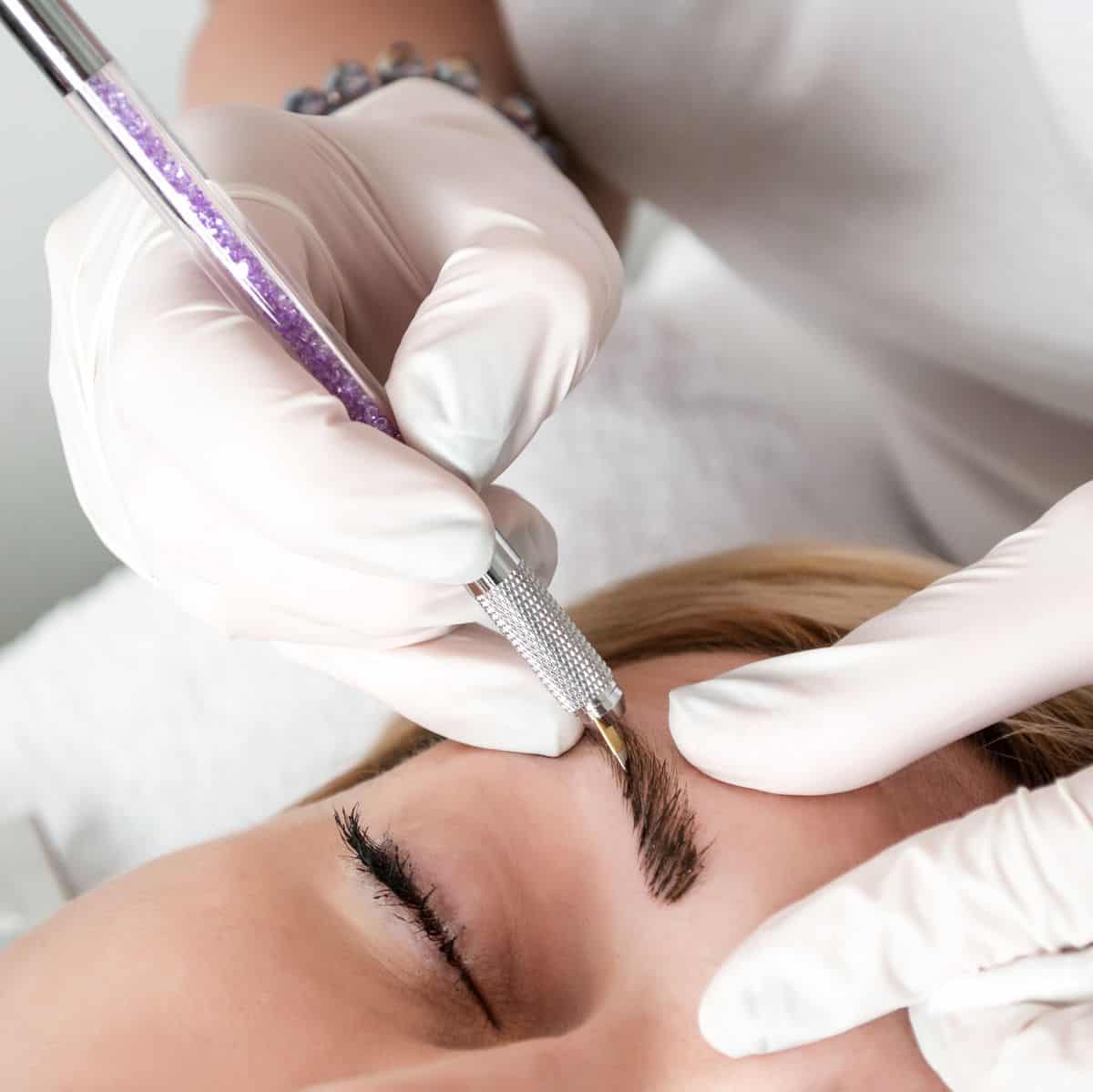Eyebrow Definition: Microblading
The trouble of having to use a combination of brow pencils, brow gels, brow pomades, and even soap (hey, soap brows) every single day is what calls for microblading, a semi-permanent form of brow defining. Thinking of microblading sounds a bit scary, but it doesn’t last forever and has a surprisingly easy (and almost painless) healing process when done properly.
Microblading is a semi-permanent form of cosmetic tattooing. But unlike traditional tattoos, which use a tattoo gun, microblading uses a blade-shaped tool with a row of tiny, barely visible needles to create hair-like strokes along your brows while depositing pigment into your skin. The result? Realistic-looking brow hairs that don’t wash off for a year or more.
Microblading is a type of tattoo, but it’s not a permanent tattoo. Permanent tattoos use concentrated tattoo ink, while in microblading we use bio-colour gels that are skin friendly & safe.With microblading, the pigment is applied superficially to your skin (so your body eventually metabolizes it until it fades away), rather than placed into your skin’s deeper layers (where it becomes permanent).
Because of the pigment used and the way it’s applied to the skin, microblading produces a semi-permanent “tattoo” that looks soft and subtle, instead of opaque and bright as with traditional tattoos. Over time, the pigment on your brows will also lighten a shade or two from its original color, which is not the case with permanent tattoos.
Microblading can be great for those with thin, sparse brows to get some definition and fullness. Those who wish to change the shape of the eyebrow to some extent can also be a candidate for the procedure. Those who already have some eyebrow hair and just want a fill-in or enhancement to their natural brows can get a very natural look with microblading.
A numbing anaesthetic cream is applied for atleast 45 minutes before the procedure so that the area is anaesthetised. Hence, there is no pain but just a sensation of a scratch which is similar to what is felt during eyebrow threading.
Microblading can last anywhere from one to three years depending on your skin type (oilier skin types tend to fade the fastest). In one year, there might be some fading but touch-ups every 12-18 months can help your microbladed brows look fresh throughout the years.
- Stop using retinol, chemical exfoliants like glycolic acid, tretinoin and physical exfoliators like scrubs, at least one week before microblading.
- Avoid taking aspirin or vitamin E for 48 hours before your appointment
- skip caffeine or coffee on the day of procedure
- If on antibiotics, wait atleast 14 days after your final dose before getting microblading
- Avoid smoking & drinking for atleast 48hrs after the procedure.
The healing usually begins in 5-7 days and complete healing is achieved by end of 4 weeks which is when a touch-up can be done in case you want more dense and fuller eyebrows.
- Don’t get your eyebrows wet for atleast 3 days after procedure. Use wet wipes to clean face.
- Donot skip sunscreen. It is a must.
- Avoid swimming and heavy workouts that lead to excessive sweaing.
- Apply an antibacterial ointment to your brows every two hours for the first 24 hours
- When there is dryness or scabing, use vasaline or white petroleum jelly.
- Do not pick or scratch the scabs. They will shed off naturally.
- Make sure to avoid using any acids or retinoids until your brows fully heal as they interfere with appropriate pigment take up
Yes, you will still have to pluck your eyebrows after microblading, if you’re someone who prefers a clean, groomed look. Your eyebrow hairs will continue to grow like normal, so if you like to touch-up stray hairs or shape your brows, you’ll still need to tweeze, wax, or thread.


